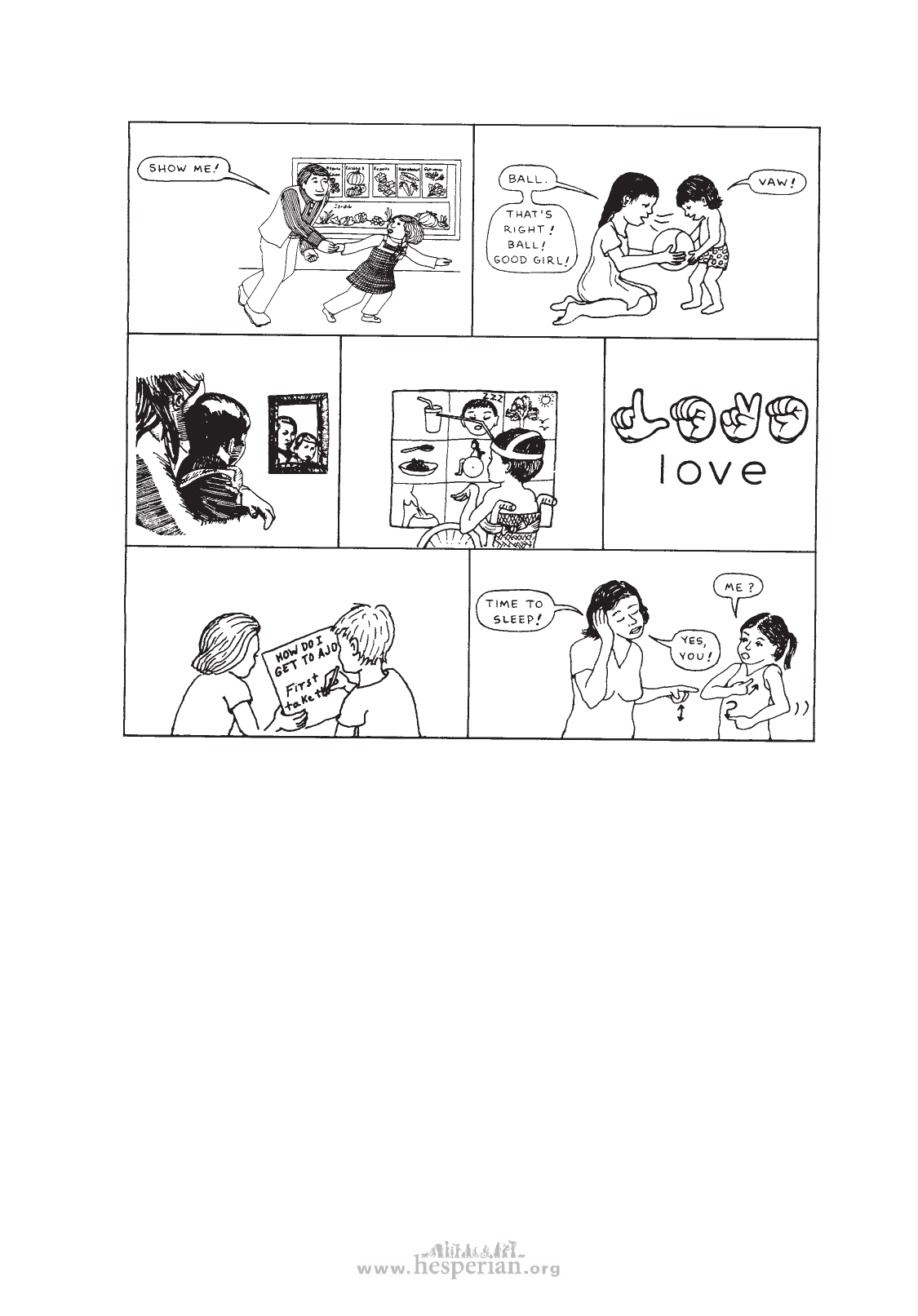
DIFFERENT WAYS TO HELP A CHILD COMMUNICATE
DEAFNESS 263
COMMUNICATION BY SHOWING
HELP WITH HEARING AND SPEAKING
LIP READING
COMMUNICATION BY PICTURES
AND POINTING
FINGER SPELLING
mirror
READING AND WRITING
For finger spelling alphabet
in English, see p. 273.
SIGN LANGUAGE
“Talking
with the
hands”
Oral communication
Oral communication (communication by mouth) combines helping a child use her limited
hearing as much as possible, with lip reading, and with learning to speak. In many
countries, schools for deaf children teach only oral communication. Unfortunately, oral
communication usually only works well for children who can hear the differences between
many words, or for children who became deaf after they learned to speak.
Total communication
Total communication is an approach that encourages a child to learn and use all the
different methods that work well for that child in her particular community. This might
include any (or all) of these:
• the child’s own gestures
• sign language
• drawing, reading, and writing
• finger spelling
• whatever hearing the child has, to develop lip
reading and speech
IMPORTANT: ‘Total communication’ as we use the term, does not mean that all the above
methods are used for every child. It means that we try all the methods that might work
for a child. Then we work with whatever methods will help the child communicate as
easily, quickly, and fully as possible with her family and community. It is an approach that is
friendly, flexible, and adaptable to individual and local needs.
disabled village children